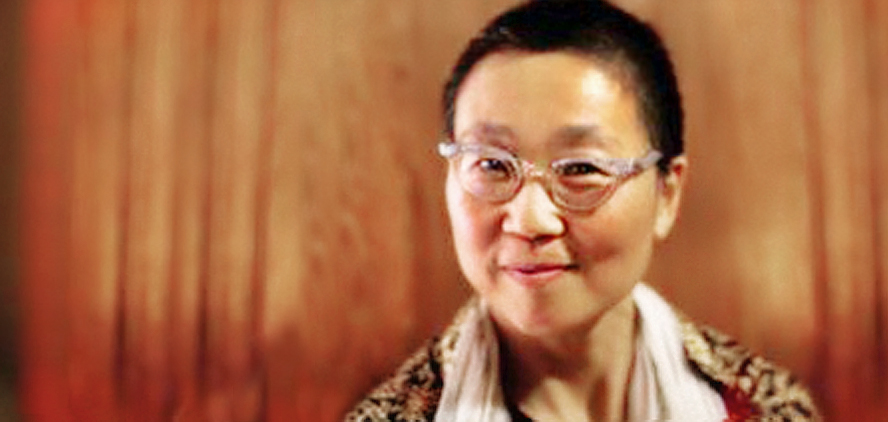 YELLOW, BROWN, BLACK, AND BEAUTIFUL: Iyengar Yoga and People of Color
YELLOW, BROWN, BLACK, AND BEAUTIFUL: Iyengar Yoga and People of Color
by Hong Gwi-Seok
Gazing at our “yoga bible,” LIGHT ON YOGA, we see iconic photos of BKS Iyengar in every asana imaginable, setting a standard we have yet to fulfill. But almost everywhere else, the images of yoga feature white people, and almost everywhere we go, especially in the Iyengar Yoga world of the USA, those are the students we see in class. Even in a nation comprised of immigrants, that is increasingly becoming a majority “minority” nation—black, Latino/Hispanic, Asian, Middle Eastern, etc—Iyengar Yoga classes tend to be filled with white people, with teachers who are most often white, especially among our most treasured Senior Teachers.
Like many people of color in America, as I go through my week, I often find myself the only nonwhite person in the room. My family’s immigrant story is all about learning to succeed in the white-dominated worlds of universities, science, and the arts. My father came to the United States because the research opportunities he sought were only available here. War-torn Korea, following decades of occupation, first by Japan, then by the USA, held little promise for an ambitious scientist like my father.
Growing up, I assimilated to white society, just like my parents trained us to. My best friends were white, my favorite cuisine was Italian, I forgot my mother tongue, and I married a white man. Over the years, I started to sense what a toll this was taking on my inner life: a sense of disconnection from my history, extended family, and ancestors; a feeling of not belonging anywhere; a hunger for a culture I could not name nor access; and growing rage at systems of oppression that I increasingly recognized as interconnected.
All of these feelings led me to create a 4-month sabbatical for myself in the fall of 2014 in Seoul, South Korea. My goals were to relearn my mother tongue, connect with my artist/activist/yoga peers in Korea, and spend time with my family to learn our history. Not until I had been living in Korea for several months this past fall did I realize the toll assimilation had taken.
I experienced a deep, unspoken comfort in living among people who looked like me. Although Seoul is becoming increasingly international and multiracial/multicultural, Korea is still famously homogeneous. While issues of discrimination absolutely need to be corrected, I found a sense of ease in being surrounded by other Koreans. I noticed this when I went to an event in Seoul which was majority white people. I felt a heaviness creeping in, and realized I was putting on a habitual coat of armor, protecting myself from the inevitable microaggressions from white society and the subtle sense of inferiority I feel in such settings.
It’s not a personal thing. It’s not that these particular white folks are arrogant or ignorant or whatever. It’s the result of centuries of white dominance–economically, politically, socially, culturally, etc. It’s the result of a lifetime of seeing white people in positions of power and authority. Teachers, police officers, store clerks, bankers, doctors, lawyers, politicians, writers, artists, pastors, you name it. Even when people of color are in such positions, often we have internalized racism to the point that we perpetuate white supremacy, such as in recent examples of black police officers’ violence against blacks. Oppression runs deep.
And so it goes in the yoga world. As a yoga practitioner, all too often I have found that the learning I am seeking is only available in majority white settings. This is no coincidence, of course. The system of global white supremacy/institutional racism persisting over centuries controls access to power and learning.
How this manifests is that only yoga practitioners who have a certain level of exposure even know what Iyengar Yoga is. Free and cheap yoga classes–in the gyms, in the parks and churches, “coupon-yoga”– tend to be taught by novice teachers, whereas Iyengar Yoga, with a reputation for being serious and/or snooty, and sometimes described as “gourmet yoga” or “the Harvard of yoga schools,” often requires special effort to find. Because of its refinement, and years of continuous study and commitment to become certified, both our teachers and students tend to be well-read middle and upper class folks, who shop organic, read the New York Times, and can afford the $20+ drop-in fee. In other words, our teachers and students in the USA tend to be white. Even in a city like Detroit, which is 85% black, our students are majority white.
These days, the greater yoga community in the USA is increasingly discussing issues of cultural appropriation and racism. UC Berkeley just hosted their 2nd annual race and yoga conference, and websites like Decolonizing Yoga are gaining visibility. However, the Iyengar Yoga world has largely been quiet on these issues.
I think this is because, for better and for worse, we are purists. We believe in the purity of yoga as a transcendent practice unbound by culture, history, politics, and personality. BKS Iyengar sets the bar of practice incredibly high, and we all strive to emulate his dedication. For us, the practice is foremost, and like ascetics, we separate ourselves from the mundane in order to devote ourselves to this rigorous spiritual path. I embrace this universality of yoga and believe in my bones this ultimate truth. At the same time, I am a temporal being, living in this particular time and place with responsibilities to myself and others.
Is it possible to be socially and politically responsible while maintaining the purity and high standards of an attentive, committed practice? A student commented that his Southeast Asian comrades in the social justice movement didn’t take their yoga practice as seriously as he did, that the yoga practice took a back seat to their politics.
Back in Detroit, another student commented to me that to her, there was no separation between my rigorous teaching style, and my political rigor. That to her, being precise, demanding and clear with our bodies in asana was the same as being precise, demanding and clear in our social justice work.
I acknowledge that this is possible because of class privilege which led me to Iyengar Yoga 20 years ago, and afforded me time to pursue this path, including multiple trips to India. Now I feel an urgency to “open the doors to the school” and share the teachings, especially with communities who have not previously been included, while addressing a larger discussion of race and social justice.
The workshop “Yellow, Brown, Black, and Beautiful,” at Adeline Yoga on May 2, 2015, was a step in striving to create this reality. Eight of us gathered, and each student remarked that this was the first time they had been in an Iyengar Yoga class with all people of color. We began in Supta Baddha Konasana, while I read a poem I had written in response to the question, “Why teach a women of color yoga class?”
We opened into a free write and a heartfelt discussion about what came up for each person. We could have talked for hours, but I wanted to keep the work body-centered, so we launched into an asana sequence. We used the wisdom of asana to process and understand the strong feelings and issues that arose.
We held a variety of poses in this workshop, doing standing poses to build strength, establish the earth element, and connect the legs to the pelvis and spine; forward bends to promote a sense of introspection and surrender to God; backbends to build a sense of trust and opening into the unknown; inversions and twists to process, metabolize, detoxify and provide a new perspective; and rest poses to absorb the changes.
This is just the beginning of a longer conversation. Perhaps you will join me in considering how Iyengar Yoga can keep prioritizing its high standard of practice while also addressing social justice issues. As Guruji reminds us, “Yoga is firstly for individual growth, but through individual growth, society and community develop.” May we expand the rigor of our practice to living lives of greater integrity, to bring justice and healing to our communities.

Joanna Colwell says
Thank you so much for this beautiful piece that expresses so well how our practice asks us to respond to the world we live in. As a Jewish yoga practitioner, I often ask myself what do I need to do to address the systemic injustice in our society. Clearly we must do better to make yoga accesible to all, and to educate and activate ourselves!
AW says
Hi there,
Thank you first of all for writing this piece. It was moving to me. As a white woman who grew up in a very diverse neighborhood and school system in Georgia, this has also been on my mind quite a bit lately. I will share this on my page and with people I come across to keep this conversation going. We need diversity in Iyengar Yoga. In my opinion, this is where we should be focusing our attention more in the method. I could go on for ever with this one, but I think you did a much better job.
Thank you again for your courgage to write this.
A
Betty Lewis says
Thank you for writing such a heartfelt and thoughtful article. As an African American Yoga teacher and practitioner I often say that I am a swan in a room of ducks. no long legs and small hips and breasts that can go braless to class. Each Asana has its own particular challenge for my short stature and round body, especially as I have become a senior citizen. Still I love the practice, respect my teacher and the teaching but have never been in any class where I felt that I could be my self completely. The rigor of the training that I can take back to my students somehow makes it all worthwhile. However I must say, I do look forward to a time when I will no longer be the only one or occasionally two Brown Girl(s) on the mat.
kwwspin says
My Google search question was, “Why aren’t there more African-American Iyengar Yoga Teachers?,” when I came upon your site. Thank you. You’ve answered the question and help diagnose the problem. I was drawn to Iyengar Yoga because it makes asanas accessible, helps make the art and practice understandable, and is less intimidating than other forms of hatha yoga. Please continue this conversation and feel free to call on me to help move this forward. Thank you so much for opening the dialogue. You have turned on a light in the darkness. We can all now see the path to move this journey forward.
LW says
Thank you for writing this piece. In the 25 years I have been an Iyengar yoga practitioner, the level of diversity doesn’t seem to have changed at all! This is just astounding, frustrating, and depressing to me. I hope you keep this conversation going so leadership in the community will start to address it. Clearly we as a yoga community are doing something wrong and give an impression of being unwelcoming.